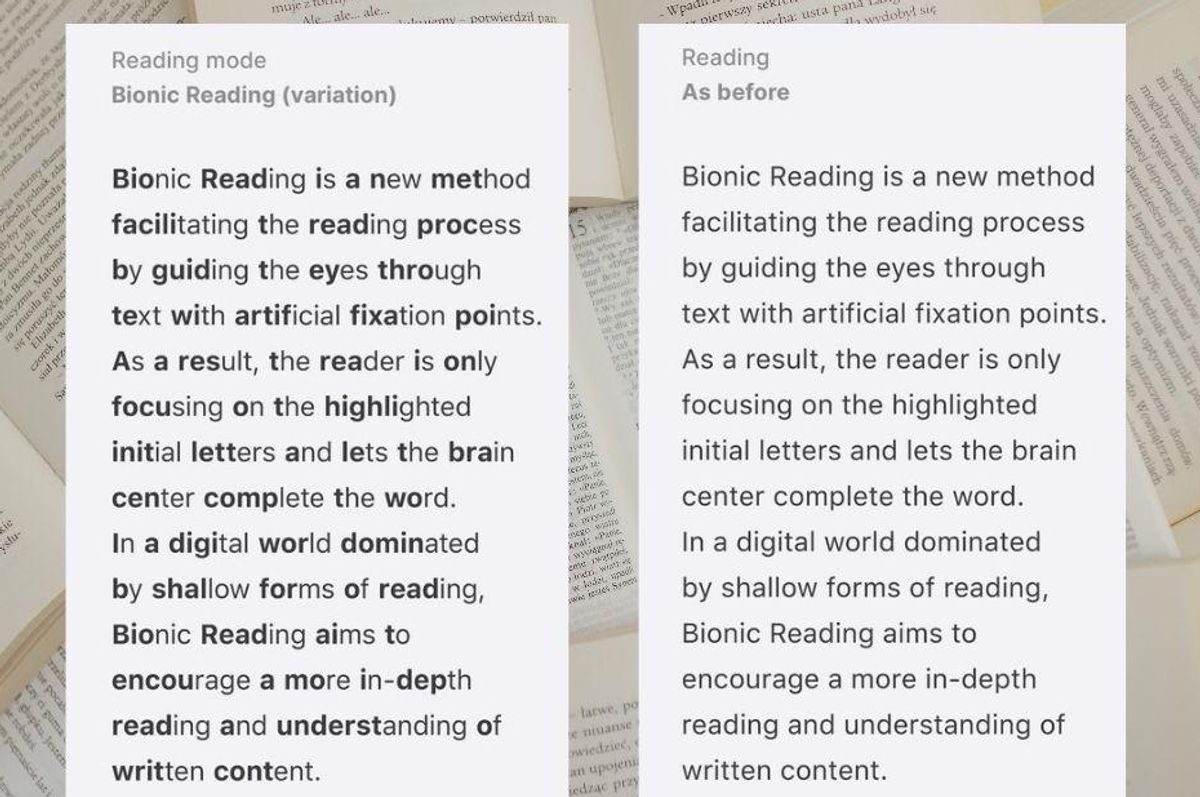
Reading is a fundamental tool of learning for most people, which is why it’s one of the first things kids learn in school and why nations set literacy goals.
But even those of us who are able to read fluently might sometimes struggle with the act of reading itself. Perhaps we don’t read as quickly as we wish we could or maybe our minds wander as our eyes move across the words. Sometimes we get to the end of a paragraph and realize we didn’t retain anything we just read.
People with focus or attention issues can struggle with reading, despite having no actual reading disabilities. It can be extremely frustrating to want to read something and have no issues with understanding the material, yet be unable to keep your mind engaged with the text long enough to get “into” what you’re reading.
But what if there were a font that could help you stay focused? That could help you not only read faster but better retain what you’ve just read?
That’s what the creators of Bionic Reading claim is possible with their font tool.”Bionic Reading revises texts so that the most concise parts of words are highlighted,” the Swiss company’s website reads. “This guides the eye over the text and the brain remembers previously learned words more quickly.”
Give it a try:
The gist is that our eyes don’t need to focus on the entire word because our brains can fill in the rest for us. By bolding the first part of the word, we’re more quickly able to move from word to word.
“Bionic Reading aims to play a supporting role in the absorption of volume text,” states the website. “We see technological progress as an opportunity for all those who want to increase the pleasure of reading in a noisy and hectic world in a focused way and without distraction.”
While there are no studies cited on this method of reading, there are plenty of anecdotes about it being helpful. The example shared by @WhattheADHD on Twitter got people’s attention and many people responded with enthusiasm at how much easier the bionic reading text was for them to read.
“This is amazing! I have ADHD and I didn’t even realize that I was having trouble fixating when I read,” wrote one person. “My eye latches right on to the bold face. Can’t wait to try reading a book again. It’s been all audiobooks for a while.”
“It’s incredible how reading this feels like finally unlocking 100% of your brain,” wrote another.
However, not everyone was impressed or thrilled with the sample. Some people said that they had a harder time reading the bionic text or that it distracted or slowed them down. Both positive and negative responses came from a diverse pool of people. Some who described themselves as neurodivergent said that they loved it and some said it was harder. The same went for people who said they were neurotypical, so it’s hard to say who this tool may specifically help the most. Everyone’s brains work differently, and different people will find different things helpful.
Bionic reading might be a game-changer for some, but it’s not the only tool of its kind. There are speed-reading programs that train you to stop reading each word and allow your brain to read visually instead of auditorily. There are also various methods of making reading easier by adjusting how your eyes move across the text.
For instance, check out this “space reading” technique:

Bionic Reading has a free text converter on its website that you can use to try out its font changes. A YouTube clip from the company also shows possibilities for how the font can be adjusted to individual preferences, making more or less of the initial letters bolded.
And again, if this doesn’t work for you, then it’s probably not made for you. For people who struggle with reading, something like Bionic Reading could make a huge difference.
Three cheers for technology being used to help people overcome difficulties and make learning easier and more efficient.
This article originally appeared on 5.30.22.



